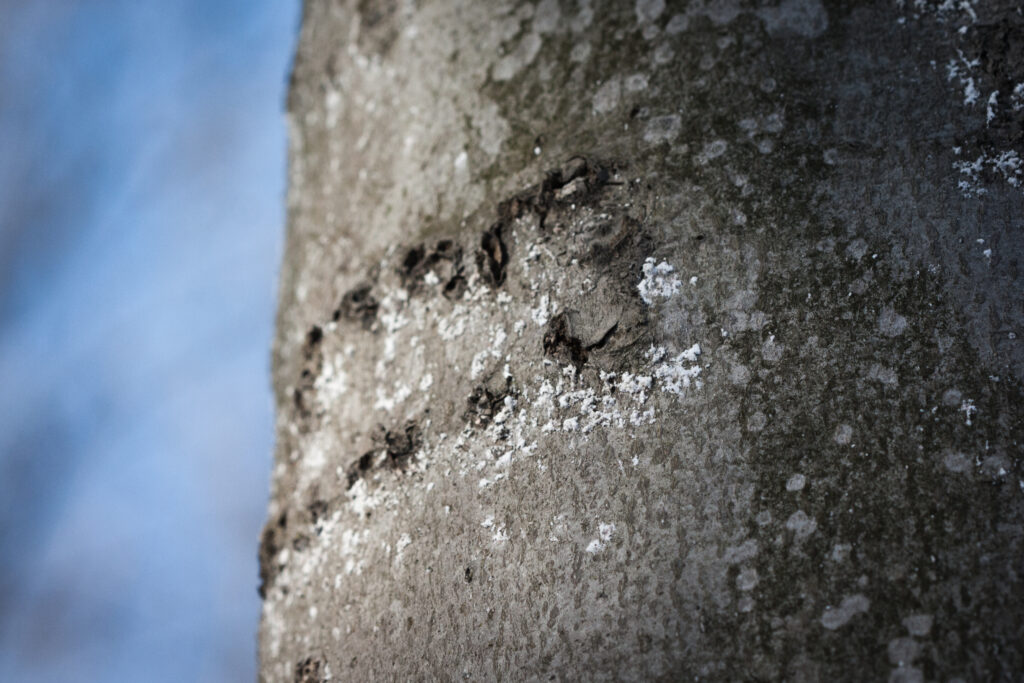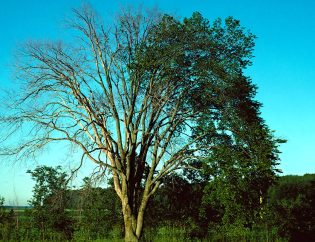
Beech Bark Disease
Beech bark disease (BBD) is a destructive forest disease that primarily affects American beech (Fagus grandifolia) and European beech (Fagus sylvatica). The disease is caused by a combination of two organisms: an insect, the beech scale (Cryptococcus fagisuga), and a fungal pathogen, typically Neonectria faginata or Neonectria ditissima. The disease has wreaked havoc in forests across North America and parts of Europe, leading to significant ecological and economic consequences.
The Disease Process
The development of beech bark disease occurs in two stages. First, the beech scale insect colonizes the bark of the beech tree, feeding on the sap. These tiny, woolly white insects pierce the bark and feed, creating small wounds that provide entry points for the fungal pathogens. Once the bark is sufficiently damaged by the insect, the fungi invade and infect the tree, leading to cankers, extensive bark death, and eventual tree mortality if left untreated.
Beech trees affected by the disease typically display symptoms such as roughened, cracked bark, and bleeding lesions. Over time, the bark becomes brittle and breaks off, leaving the tree susceptible to other secondary infections and pests.
Ecological and Economic Impact
The spread of BBD has led to significant losses in both natural forests and urban landscapes. American beech, an important species for wildlife as it provides food and habitat for various animals, faces severe population declines in infected areas. Economically, beech trees hold value in the timber industry, making their loss detrimental to forest management practices and related industries.
Treatment and Cure Options
While there is no definitive cure for beech bark disease, various strategies have been developed to manage the spread and mitigate its impact. These include:
- Tree Monitoring and Early Detection: Regular monitoring of beech trees is critical for early detection of beech scale infestations. By identifying infested trees early, forest managers and arborists can take steps to minimize the spread of the disease.
- Chemical Treatments: Insecticides can be used to control beech scale populations. Systemic insecticides such as imidacloprid or dinotefuran, which are absorbed by the tree and target the insect as it feeds, have been effective in reducing scale numbers. However, chemical treatments are most practical in limited applications, such as in urban settings or for high-value trees, due to the high cost and potential environmental impacts.
- Biological Control: There has been ongoing research into biological control options for managing beech scale. Certain predatory insects, such as Laricobius nigrinus, are being explored for their potential to naturally reduce beech scale populations without the need for chemical intervention.
- Fungal Disease Management: Once a tree is infected with Neonectria fungi, there is no treatment that can reverse the infection. However, proper forest management techniques, such as thinning infected stands and promoting species diversity, can help reduce the overall impact of the disease on forest ecosystems.
Maintenance and Long-Term Management
Long-term management of beech bark disease requires an integrated approach that combines monitoring, chemical treatments, biological controls, and silvicultural practices. In areas where BBD has become widespread, forest managers often focus on promoting resistant beech trees. Some beech trees have shown natural resistance to the beech scale insect, and efforts are being made to propagate and protect these resistant individuals.
Maintaining forest health by encouraging biodiversity, reducing tree stress, and promoting resistant tree species can help limit the spread of beech bark disease over time. While BBD may never be fully eradicated, a proactive approach can mitigate its long-term impact on forests and tree populations.
Beech bark disease poses a serious threat to beech tree populations across North America and Europe. By employing a combination of monitoring, chemical treatments, biological controls, and sustainable forest management, the spread of this disease can be slowed and its impact reduced. Ongoing research into resistance and biological control offers hope for the future, but for now, vigilance and careful management remain the best strategies for preserving beech forests.

